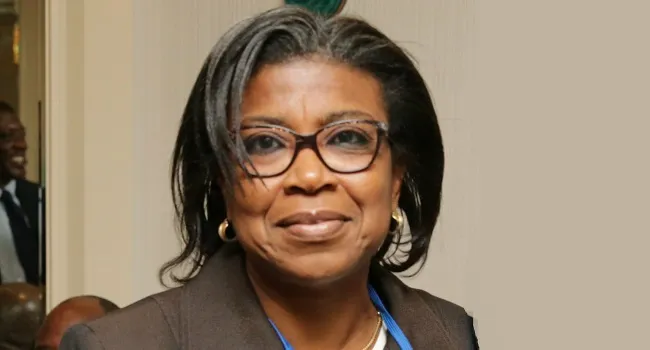The federal governemen to Nigeria has attributed the rise in borrowing under the 2022 fiscal year has been to the retention of subsidy payments. This was made known by the Director-general of the Debt Management Office (DMO) Ms. Patience Oniha.
Africa Today News, New York reports that the DMO DG asserted the subsidy regime shot up the debt stock by ₦N1 trillion in 2022 alone to enable the government to pay the extra cost of petrol subsidy.
Ms Oniha made the remarks during a presentation at the executive course on budgeting and fiscal transparency at the Army Resource Centre in Abuja, on Tuesday. Nigeria’s public debt is current over N44 trillion, a level at which Ms. Oniha said remains within acceptable limits and sustainable.
She informed the participants that the debt office was deploying World Bank and International Monetary Fund tools to ensure the sustainability of Nigeria’s public debt.
Oniha spoke on Debt Sustainability Challenges and Strategic Revenue Mobilisation Initiative. According to her, the Nigerian government had to resort to borrowing to fund the budget due to revenue challenges.
Read Also: Our Position On Petrol Subsidy Hasn’t Changed, NLC Tells APC
‘Maturities in the Public Debt Portfolio are well spread to avoid bunching of maturities and to ease repayments of maturing obligations. The Domestic Debt portfolio has securities with tenors ranging from 91 days to 30 years, while the External Debt Portfolio has securities ranging between 5 years to 30 years.’
She explained that despite criticisms of the government’s borrowing, Nigeria’s debt to GDP ratio remains among the lowest globally.
She pointed out that while Nigeria’s debt to GDP ratio was 23.06 per cent, countries such as Angola (136.54 per cent), South Africa (69.45 per cent), Ghana (78.92 per cent), United States (133.92 per cent) and United Kingdom (104.47 per cent) have higher ratios.
Oniha like other governments across the world, Nigeria is borrowing more to meet with economic and social challenges posed by the Covid-19 pandemic and the Russia-Ukraine war.
‘Debt levels were already rising prior to Covid-19 crisis when compared to 2014. Globally, sovereign debt grew from 49 percent of GDP in 2014 to 57.9 percent in 2019 and in sub-Saharan Africa, from 35 percent of GDP in 2014 to 55 percent in 2019. In Nigeria, this ratio rose from 13 percent in 2014 to 19 percent in 2019,’ she stated.
The DG also explained that the government was not just borrowing for borrowing sake, emphasising that the loans would enable the government to finance critical infrastructure with multiplier benefits (job creation, movement of persons and goods) and overall GDP growth.
She noted that the country was facing a revenue crisis, adding that it has become very important for the government at all levels to pay more attention on how to increase revenue generation as a means of reducing borrowing.

